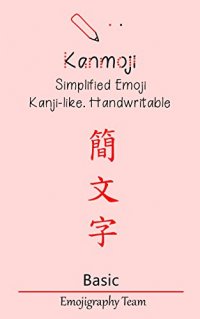Kanmoji is Simplified Emoji, providing a standard in handwritten emoji.
(You can also buy this book on amazon.co.uk )
Features:
· Kanji-like
· Handwriteable
· Easy to remember; kids and grandma can learn it
· Simple few strokes per emoji
· Fast to write
· Sharp and clear
· Clean, no distraction from many colors and lines of original emoji
· Support colors in emoji
· Versatile. Visually readable in small form and from a far distance
· Personal. Handwriting always has a personal style
· Contains all emoji characters from Unicode
· Contains additional characters not available in Unicode
Emoji exist in the online environment where people just type or choose emoji characters from a touch keyboard. It was not designed for offline purposes in the first place. However, if we want to use the emoji language, we need to be able to use the emoji in an offline environment; remembering the stroke to create a character, learn how to write it, compose a sentence, all in a similar speed as using our regular 27 alphabets (A, B, C….).
Try to write an emoji character. Chances are, you are not writing it, you are actually drawing it! Emoji is a picture, and not everyone has the ability to draw a picture clearly. With Kanmoji, we have a set of standard in handwritten emoji where everyone will be able to read and write clearly, for visual communication with one another in the world, regardless of their native language.
This book, Kanmoji Basic (1), is the first in Kanmoji series. It contains the Kanmoji of the top 131 most popular emoji characters used on Twitter, Instagram, and Facebook in 2017 and the stroke steps required to write them. It is targeted for all ages (adult related emojis such as wine, gun, etc. has been removed). It also introduces you to a concept of color in Kanmoji: how to write color for some parts of an emoji.
Kanmoji (simplified picture characters), together with Suumoji (number characters) will be used as a base for upcoming Emoji Language: Emojigraphy.












